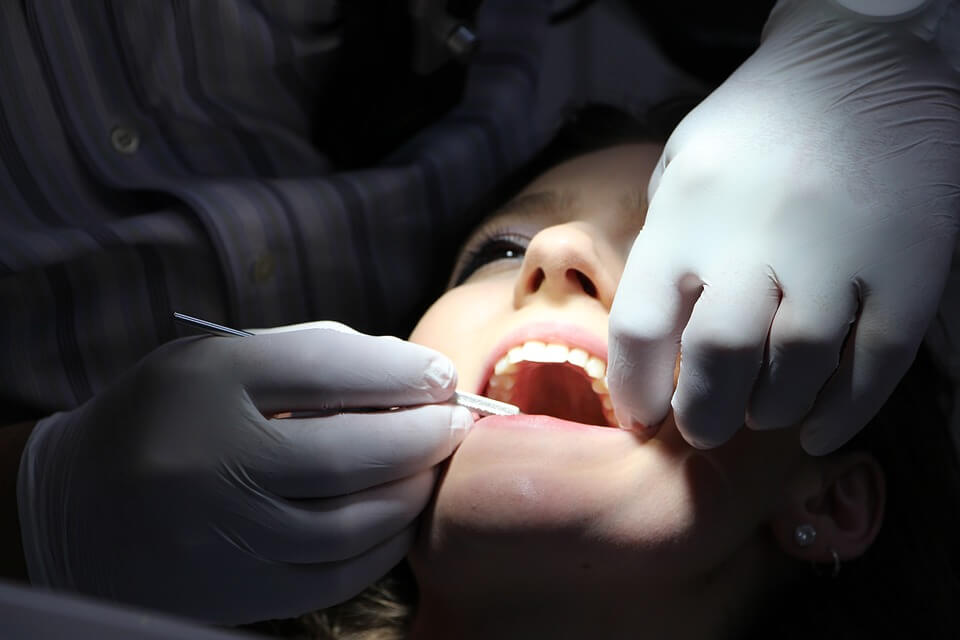Telltale Signs That Your Dental Fillings Need Replacement
Fillings don’t last forever. In fact, sometimes they need replacing due to regular wear and tear. While fillings protect your teeth from damage and decay, you will lose that protection when your filling wears down or falls out.
And without that protective layer, your tooth will be exposed to harmful bacteria and decay. So it’s important to recognize the signs that your tooth filling needs replacement to prevent further dental problems down the road.

DO FILLINGS LAST FOREVER?
While dental fillings can last for many years, sadly, they do not last forever. Eventually, all fillings need to be replaced due to constant stress from eating and drinking, and especially from tooth clenching and grinding.
Over time, fillings can wear out, chip, crack, or even fall out altogether. And when a filling fails, it leaves an open space for food and bacteria to enter.
As a result, tooth decay can develop underneath the filling or in place of where the filling once was. And if left untreated, this decay can infect the dental pulp—which houses the tooth’s nerve and blood supply—leading to agonizing pain and eventually the need for a root canal or the loss of a tooth.
HOW TO TELL IF YOU NEED A REPLACEMENT FILLING
Problems with existing fillings can be detected early on with regular dental checkups. But if you are between checkups and you’re concerned about a filling, here are the telltale signs that you might need a replacement filling.
Tooth Sensitivity
Tooth sensitivity is one of the most common signs that you need to replace a filling. If the filling is worn out or missing, your tooth will become more sensitive to hot, cold, or sweet foods. Your tooth may also be sensitive to touch with your finger, toothbrush, or another dental tool.
Pressure When Eating
If you detect pressure in a tooth when biting down or chewing food, this could be a sign that your filling and dental pulp are damaged.

Sharp, Throbbing Pain
Sharp, throbbing tooth pain is never a good sign. This pain might come in brief moments while eating or drinking. Or it might happen when you aren’t even using your teeth. Breathing in cold winter air can also trigger dental pain or sensitivity when a filling needs replacement.
Toothaches and pains are often caused by inflammation in the dental pulp. For your sake and your tooth’s, don’t put off a visit to the dentist if you are experiencing pain. Leaving infected dental pulp for too long without treatment will lead to irreversible necrosis—more commonly known as a dead tooth.
Visible Damage
Along with pain and discomfort, you may also be able to detect visible damage to your filling or tooth. Keep an eye out for holes and dark spots on your tooth, along with fillings that are broken, cracked, separating from the tooth, or missing.
Floss Tears When You Use It
If your dental floss regularly tears or shreds when you use it in an area of your teeth that has a filling, this could be a sign that your tooth is cracked and your filling needs replacement.
FILLING TYPES (AND HOW LONG THEY LAST)
These days, dental patients can enjoy having dental fillings that match the colour of their teeth. There are various types of tooth-coloured materials, like ceramic and plastic compounds, that are used to repair decayed and damaged teeth.
The type of material used, along with the filling placement and location, will influence the cost, performance, durability, and lifespan of a filling.
Metal Fillings
Amalgam fillings—commonly known as metal fillings—use a combination of silver, copper, tin, and mercury. Amalgam fillings are strong, durable, and highly resistant to wear while being relatively inexpensive.
Amalgam fillings, along with gold fillings, can last up to 15 years. However, these fillings do not match the colour of a tooth and can be quite noticeable.
Composite Fillings
Composite fillings are made of acrylic resin and glass-like particles that are finely ground. These fillings are tooth coloured so they won’t affect the appearance of your teeth.
Composite fillings are durable and fracture-resistant for small- to mid-sized restorations with moderate chewing. These fillings may need replacing after five years, while ceramic fillings may need replacement after seven years.
Glass Ionomers
These fillings not only restore teeth but they also provided added protection with fluoride. Glass ionomers are made of organic acid and fine glass powder that contains fluoride. The result of combining these materials is a solid tooth-coloured restoration that releases fluoride in the tooth.
To find the best type of replacement filling for your teeth, speak with your dentist.

WHEN IN DOUBT, VISIT YOUR DENTIST
If you’re unsure of whether you need a replacement filling, your dentist will be able to help. During a dental examination, your dentist will use an instrument called an explorer to detect worn out spots along the edge of the filling. They will also be able to see if your filling has cracks or has worn away.
Your dentist will also use dental X-rays to see if there is any tooth decay underneath your fillings and between your teeth that is hard to detect by just looking at a tooth.
If your dentist discovers that your filling is worn out, cracked, or missing, be sure to replace the filling as soon as possible to avoid worsened complications, such as pain, tooth decay, infection, and more costly dental procedures.
Your dentist might also recommend other treatments—such as a custom night guard—to protect your teeth and fillings if you are prone to grinding and clenching your teeth while you sleep.
While fillings don’t last forever, with proper care and routine checkups, your fillings can keep protecting your teeth. So visit your dentist if you suspect your fillings need replacement and replace damaged or missing fillings to keep your teeth healthy and pain-free.

